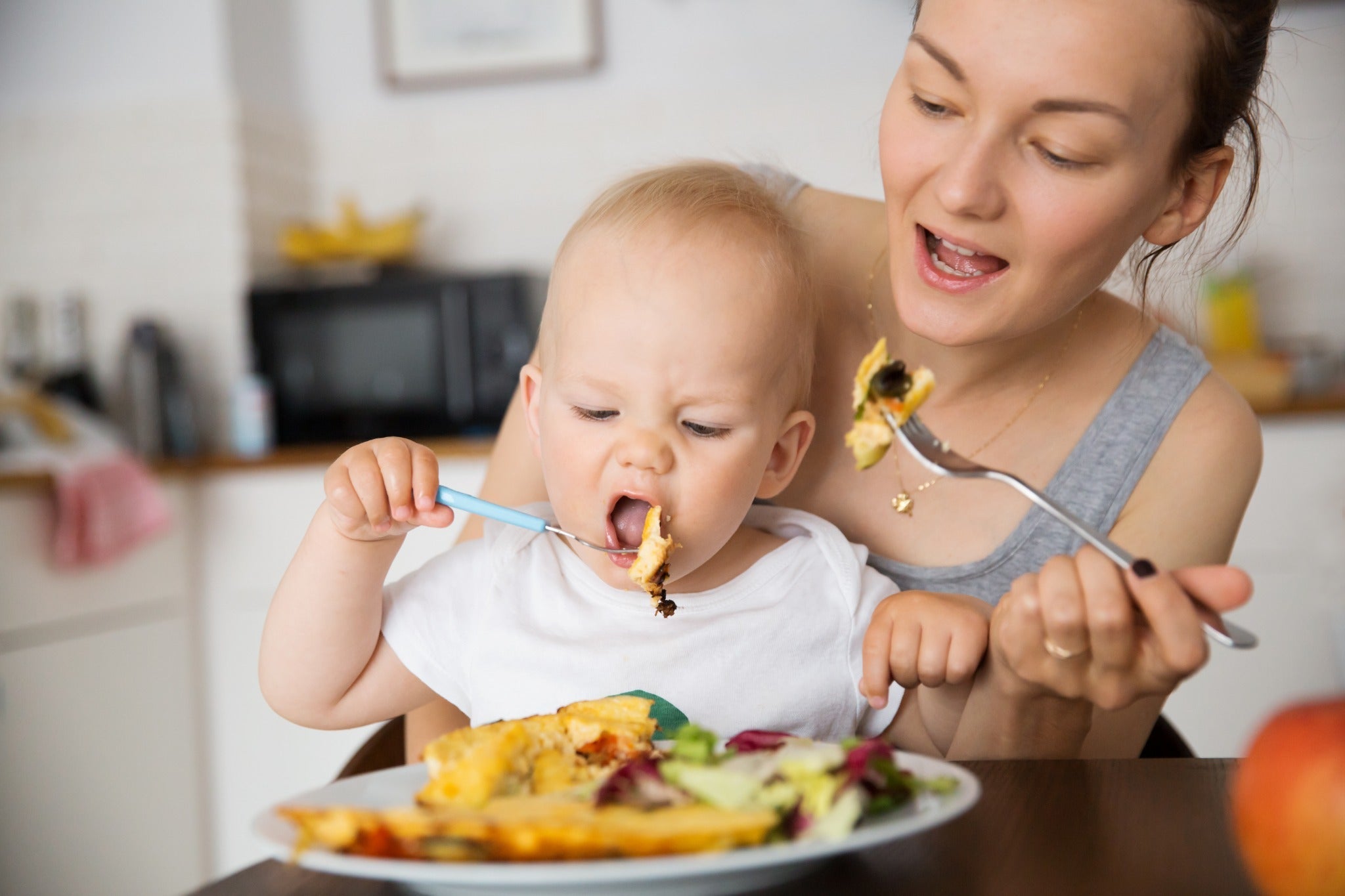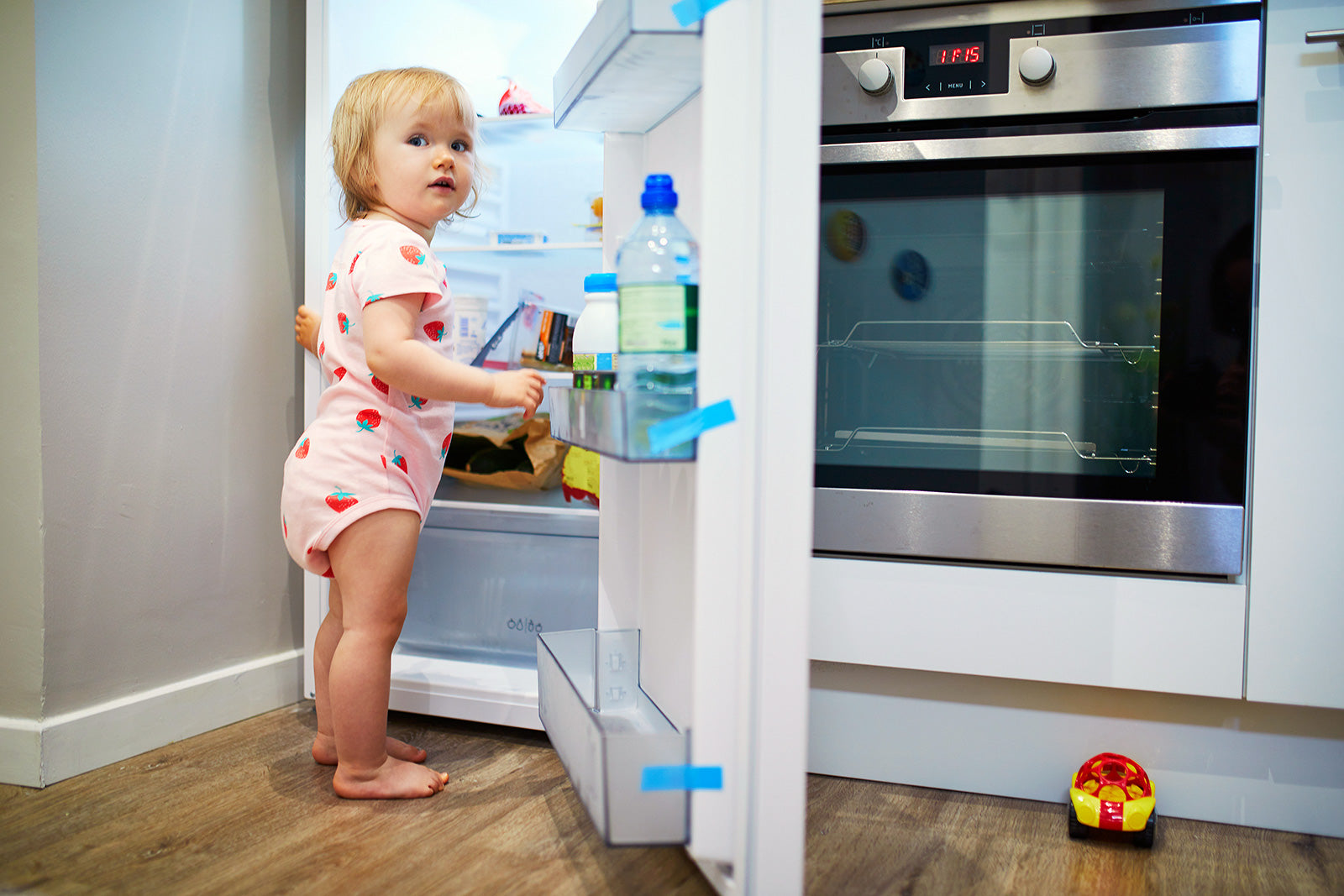7 Helpful Tips and Tricks for Introducing Solid Foods to Your Baby

Your baby is growing, and it’s so exciting to see all the changes. Now that they’re getting older, you’re probably thinking about introducing solid foods to your baby. Get ready for some funny, messy moments!
At the bökee, we celebrate each family’s feeding journey and are here to help make it easier. Our unique one-handed bottle preparation tool makes feeding your child simpler and less stressful. Grab a few for your home to make mealtimes a little bit calmer for the whole family.
Is It Time for Solid Food?
Let’s be honest. Photos of babies in highchairs, smeared baby food all over their faces, are pretty darn cute. And parents are often eager to reach the solid food milestone, especially if they have been exclusively breastfeeding. There is a little freedom to be gained after introducing solid foods to your baby!
But it’s essential to wait until your child is developmentally ready to handle solid foods before starting. Beginning too soon can carry choking risks and impact their willingness to try different foods later.

Here is a quick checklist to see if your little one is ready to take on solids:
- Are they at least four months old?
- Are they at least 13 pounds?
- Can they hold up their head?
- Can they sit up with support?
- Is the tongue-thrust reflex gone?
When your child has met these benchmarks, they are probably ready to start eating smooth foods from a spoon. If you are unsure, you can always check with the pediatrician to make sure your baby is ready.
Note: If your child has any developmental delays, consult with their doctor before starting solid foods.
Once it is time to start introducing solids, get ready for the fun! Here are seven tips and tricks to make this feeding transition smoother.
1. Start Slow
It’s exciting to start your little one on solid foods. But it will take a while before they get a significant amount of nutrition from solids. And until they are six months old, they don’t need anything besides breast milk or formula to meet their nutritional needs. So don’t worry if more food is in their hair than in their tummy.

Your child will be learning to eat at their own pace. Some people choose to start with just a few spoonfuls of food once a day. When your baby starts to get the hang of it, you can add a second solid mealtime to the schedule. Eventually, you'll offer solid food at all meals.
Many parents follow the baby-led weaning process for feeding. In this method, purees are rarely, if ever, part of the plan. Instead, parents and caregivers watch for signs of solid-food readiness from the child and follow their lead.
Baby-led weaning (also called baby-led feeding), helps foster independence and self-feeding skills more quickly than spoon-feeding by parents. Children are at the table with the family during mealtimes and have access to safe foods to feed themselves when they are ready. For many children, this process also helps foster a willingness to try more flavors and textures than traditional feeding does.
2. Experiment with the Timing
Some parents find that it works best to offer solid foods a little while before bottle or breastfeeding. Other children seem to prefer the other way around, so you may need some trial and error to find the best fit for your child’s desires.

If you are following the baby-led weaning method, you will definitely be tuning into their cues and interest. The key is finding a time when your baby has room in their belly and enough appetite to be interested in the food you offer. And remember that the preferred order of feeding might change from day to day.
It’s also helpful to be sure you don’t wait until your baby is super hungry to offer solid foods. Remember, eating solids at this point is more about learning than filling their tummy. You want this to be a stress-free experience for both of you, and that won’t be the case with a hangry baby! If you’ve missed the window and it’s time for a bottle, just grab your bökee instead and wait until later for spoon-feeding or self-feeding.
3. Texture Matters
Depending on your feeding method, your baby’s first solid foods might not actually be solid.
Many parents choose to use pureed food first to avoid choking hazards. At this point, your child is figuring out how to move food around in their mouth and swallow it. It’s a lot to learn!

Foods do need to be thick enough to control, so if you make purees for your baby, aim for the consistency of runny gravy. If it is too thin, more like water, your child may be unable to manage it.
When using baby-led feeding, you probably won’t have purees at all. Instead, foods like bananas and avocados might be some of the first solid food your baby tries.
Any time your child is eating, you need to take safety precautions, regardless of the feeding method. Babies should be sitting up and supported, and there should always be an adult close by to watch for signs of choking. Gagging is a normal part of learning to self-feed, but choking requires intervention. Taking infant CPR and first aid classes is an excellent idea for all parents.
As your child gets older and stronger and teeth begin to appear, they may enjoy more advanced textures in their food choices. Grated, minced, and chopped foods allow your child to practice more mouth control as they adjust to different textures.

When your child is eager to start feeding themselves and is ready for truly solid foods, the bökee can offer some independence. Suction your bökee to their highchair tray and fill it with some food they can pick up and eat. The bökee will stay put so that your child can enjoy some self-feeding success.
4. Start With a Familiar Flavor
Your baby will learn to eat all sorts of foods, from fruits and veggies to cereals to proteins. But when introducing solid foods, keep them simple and familiar. Baby cereal is an excellent first food, and mixing it with a little breastmilk or formula can help your child's willingness to try it.
5. One At a Time
Many babies have food intolerances and allergies. These foods may account for nearly 90% of allergies:
- Eggs
- Tree Nuts
- Peanuts
- Cow’s Milk
- Wheat
- Soy
- Fish
- Shellfish
It’s best to introduce one new food at a time so that you can determine which one is the culprit if a reaction occurs. Stick with one thing for three to five days. If there is no sign of allergy or intolerance, you can move to a new food.
6. Follow Your Baby’s Lead

You likely will have numerous power struggles with your little human as they grow. (Homework, anyone?) But these first days of exploring food don’t need to be battles. Instead, watch your baby’s cues, and follow where they lead.
Give your baby the chance to feel and taste the meal. If they open their mouth, bring them another spoonful of food. When your child gives signs of being finished, such as closing their mouth or turning away, that session is done. There’s no need to push or force. It’s important to let your child trust their hunger cues even at this young age.
One helpful way to encourage feeding independence and intuition is by teaching your baby a few sign language words. When they can communicate “more” or “all done,” babies develop autonomy in their feeding skills, and you can avoid communication frustrations. Baby sign
7. Try, Try Again
You just made your child the most perfect baby broccoli dish ever. You steamed it, pureed it, and mixed in some breast milk. Gourmet baby food coming up!
And your baby turned their cute little nose up at you. They clamped their mouth shut and turned away, determined to avoid that fabulous nutrition.

Our taste buds don't automatically prefer the most nutritious foods. Imagine how easy it would be to stick with a healthy meal plan if we were built that way? But we can learn to enjoy most flavors. Many children learn to like (or at least not avoid) a new food within eight to ten tries. Take a few days between each exposure, and don't worry if they won't try it.
Getting even the tiniest taste in that little mouth can help your baby accept a new flavor. Try putting a dot of food on their finger. If they put their hand in their mouth, they’ll get the chance to experience it.
And if you’re eager to simplify things when introducing solid foods to your baby, you can try deliveries from some amazing companies. Cafe Baby To Go and Little Spoon are two favorites that help make mealtime much easier.
You’ve Got This!

Feeding time is a wonderful chance to connect with your child. Whether you breastfeed, bottle-feed, or your child is fully into solid foods, they know you are there to take care of them.
Here at the bökee, we know you have your hands full. That’s why we created our signature bottle-prep tool that can also do so much more. Add one to your kitchen arsenal to make mealtime a little easier.




